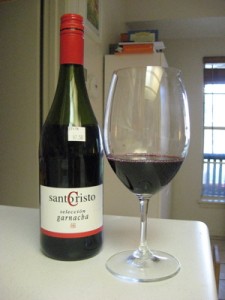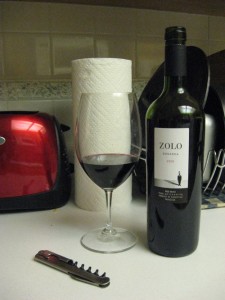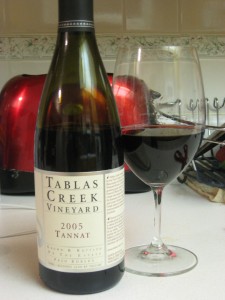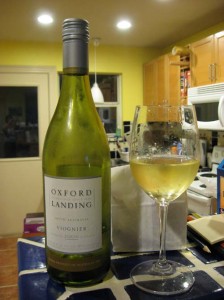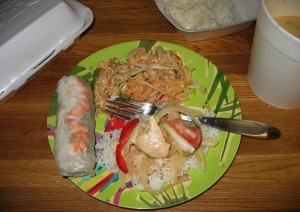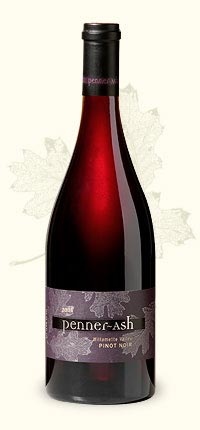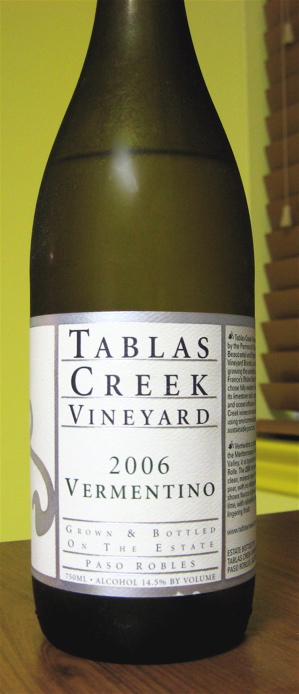Here’s how it went, today at 5:50: “Hm, I guess while the kiddo is watching a special treat TV show before dinner, I’ll surf around wine blogs for a sec.
Wait, is it Wednesday?
Wait, isn’t there a WBW coming up?
Wait, is today the effing 16th?
GD it, I was going to drink that crisp white in the fridge tonight.
Hell.
Do I even have any Rhone varietals in the closet?
Cotes du Rhone, Morgon, Bourguiel… Oh! I forgot about this little Garnacha.
Campo de Borja, cool. $7.50, easy to open for no other reason than blogging.
Plus, that’s all I’ve got that works.
OK, let’s crack it open, snap a photo and get to writing.”
So I poured out a glass and got started 10 minutes before dinnertime.
This is a pretty little wine; purple in the glass, with ruby-red tints, it smells of raspberries and mint. Tart on the palate, with pepper and flavors of unripe blackberry now, as well as a hint of… tar? Then the tannins come and chase everyone out of the room; the finish is pretty long, with cane berry flavors re-emergent and lingering. A decent level of complexity for this wine I spent $7.50 on at Austin Wine Merchant, though more of a quaffing wine and less of a food wine, to my mind at least.
I am confident of the latter statement because I happened to make barbecued chicken thighs, anasazi beans and baked sweet potato fries tonight for dinner, which was, I thought, fortuitous. I like Rhone varieties with barbecue flavors – Syrah especially, of course – but Spanish Garnacha can be so heavily extracted that they can sometimes pull off that sweet fruit/charred notes match.
With the Santo Cristo, though, the barbecue sauce on the chicken really brought out the tarry notes in the wine. Maybe if there were more acidity in the wine to offset the tomato… but the creamy sweet potatoes and beans didn’t match very well either. If I knew then what I know now about this wine, I’d put it with a fattier meal, like a grilled sirloin, or maybe just not tricky-dick barbecue sauce.
Garnacha is my ticket in to Wine Cast’s Wine Blogging Wednesday #71 because it is the Spanish version of Grenache, that staple grape of the Southern Rhone. Grenache/Garnacha is a high-producing vine that is known for its spice, ample berry fruit and high sugars (which translate to high alcohol). When the Spanish vinify their really old, old vines, however, the resulting Garnacha wine bears only superficial resemblance the French Grenache.
OK, so this is probably my worst WBW post ever. I did not plan, so I have not had time (had people over this evening after I got the kid to sleep, and it’s late – for me at least – now) to really research the producer or write a cogent breakdown of the region or the grape. I really like the Campo de Borja region for wines that drink way above their price tag, just so you know. And I am in favor of Rhone varieties wheresoever they are planted.
Drink Garnacha.
Scamp out.
